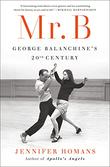With the holidays in full swing and a new year on the horizon, we at Kirkus are looking forward to the multitude of literary offerings headed our way. (Coming in our Jan. 1 issue is a preview of the most-anticipated titles for adults and young readers.) But at this time of year I also try to take one last backward glance for titles I didn’t get to during the year.
Boy, am I glad that I did. Because I read so much fiction, I usually try to catch up on the nonfiction front. I’ve picked up two biographies that come highly recommended by Kirkus’ critics and others. Both are superb and worth spending time with this winter or whenever the paperbacks land later this year.
 The literature of the Holocaust is vast, but every individual story adds to a fuller portrait of this unique 20th-century horror (more important than ever in a time of increased antisemitism). Jonathan Freedland’s The Escape Artist: The Man Who Broke Out of Auschwitz To Warn the World (Harper/HarperCollins, Oct. 18) is the story of Rudolf Vrba, a Slovakian Jew who was born Walter Rosenberg in 1924 and sent to Auschwitz in 1942, just as the Nazis’ Final Solution—the systematic mass extermination of Jews—was shifting into overdrive at the camp.
The literature of the Holocaust is vast, but every individual story adds to a fuller portrait of this unique 20th-century horror (more important than ever in a time of increased antisemitism). Jonathan Freedland’s The Escape Artist: The Man Who Broke Out of Auschwitz To Warn the World (Harper/HarperCollins, Oct. 18) is the story of Rudolf Vrba, a Slovakian Jew who was born Walter Rosenberg in 1924 and sent to Auschwitz in 1942, just as the Nazis’ Final Solution—the systematic mass extermination of Jews—was shifting into overdrive at the camp.
As the title indicates, Vrba was one of the relatively few prisoners to escape Auschwitz, and Freedland’s account of that exploit is every bit as hair-raising and dramatic as you might expect. Vrba’s postwar life was surprising and troubling, too, as he criticized the many leaders who failed to act when they understood the scale of the Nazi atrocities. But The Escape Artist is also a chillingly detailed examination of how Auschwitz operated, shining a light on the dark characters and twisted rules that made the death camp so efficient and so terrifying. In a starred review, our critic called it the “powerful story of a true hero who deserves more recognition,” and the book was a finalist for the Baillie Gifford Prize, a U.K. award that honors excellence in nonfiction.
In a very different key is a fall 2022 biography by Jennifer Homans, Mr. B: George Balanchine’s 20th Century (Random House, Nov. 1). Homans, the dance critic for the New Yorker, is a former professional dancer and the author of an acclaimed history of ballet, Apollo’s Angels. Here, she brings to life one of ballet’s greatest choreographers and most complex characters: the co-founder of the New York City Ballet.
 What a life story! Balanchine was born in Russia under the czar; survived the deprivations and social upheavals of the Russian Revolution; traveled through post–WWI Europe, absorbing its rich cultural influences—all before immigrating to the United States in 1933. Barely settled in New York, he surrounded himself with Russian and European émigrés, along with wealthy American balletomanes, and founded the School of American Ballet (1934) and the New York City Ballet (1948), where Balanchine’s dances are still performed today. (His Nutcracker remains a holiday staple.) He made ballet a vital form of art and entertainment for American audiences.
What a life story! Balanchine was born in Russia under the czar; survived the deprivations and social upheavals of the Russian Revolution; traveled through post–WWI Europe, absorbing its rich cultural influences—all before immigrating to the United States in 1933. Barely settled in New York, he surrounded himself with Russian and European émigrés, along with wealthy American balletomanes, and founded the School of American Ballet (1934) and the New York City Ballet (1948), where Balanchine’s dances are still performed today. (His Nutcracker remains a holiday staple.) He made ballet a vital form of art and entertainment for American audiences.
Homans has done copious research on her subject, who died in 1983, but what really distinguishes Mr. B are the glorious prose and deep intelligence that radiate from each of its 614 pages. (How does Homans make readers see this ephemeral art form in the mind’s eye, as if we were there, watching it performed onstage?) “The definitive account of a remarkable and flawed artist,” our critic called it, and even for a casual ballet fan such as myself, it’s absolutely enthralling.
Tom Beer is the editor-in-chief.



































